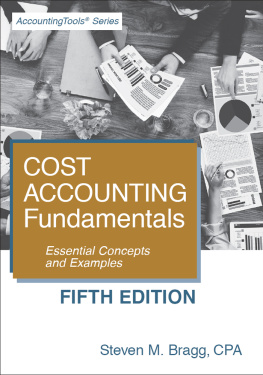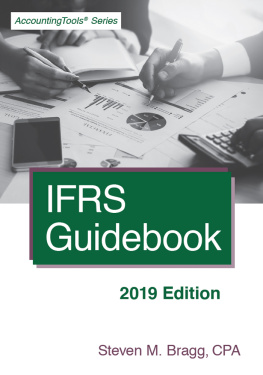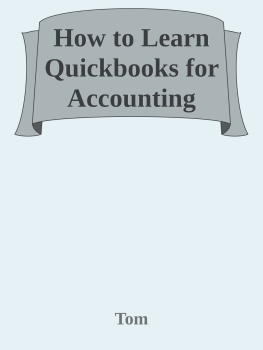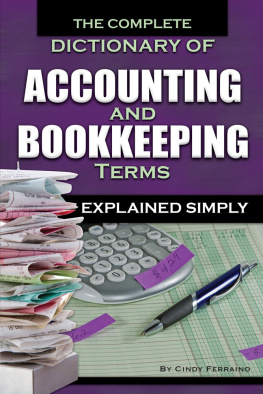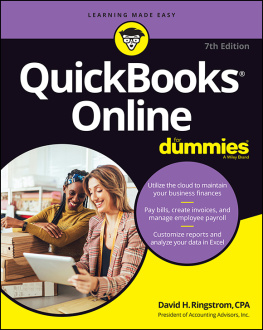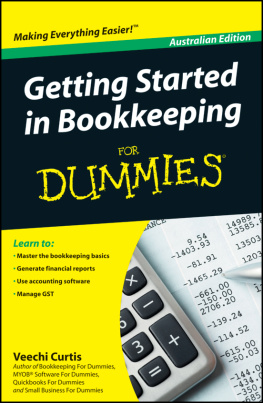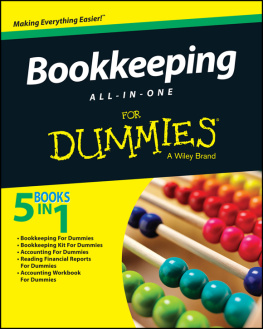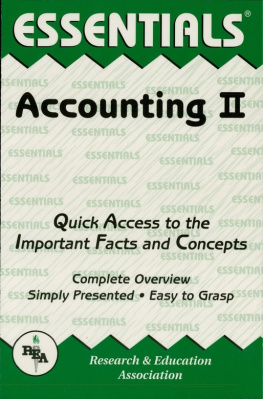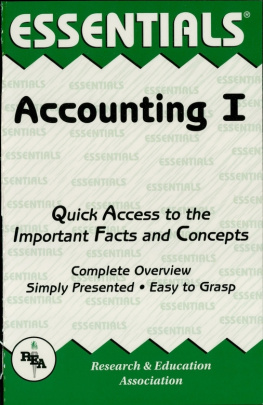Praise for Bookkeeping Essentials: How to Succeed as a Bookkeeper
Finally! Steven Bragg has provided the bookkeeping world with exactly what has been lacking. Bookkeeping Essentials strikes the perfect balance between training guide and handy resource, and therefore it is a must-have for all small businesses, whether start-up or established.
Kevin Harris, President of QuickSolvers, Inc., a small business accounting services company
I am often asked by clients for an easy-to-understand reference book for their bookkeepers to use. Steven Bragg has written that book. People have questions they seek an answer for and this book has those questions with clear, concise, and understandable answers.
Joel M. Ungar, CPA, CFE, Silberstein Ungar, PLLC
Providing both the novice and entry-level bookkeeper with solid, actionable understanding, Steve Bragg has authored a clear and concise guide for anyone entering this field. I would recommend this book as the perfect reference for everyone entering, or even into their career as a bookkeeper. My staff will each be getting their own copies.
Kenneth A. Koch, CEO, Business Resource Management, Inc.
Copyright 2011 by John Wiley & Sons, Inc. All rights reserved.
Published by John Wiley & Sons, Inc., Hoboken, New Jersey.
Published simultaneously in Canada.
No part of this publication may be reproduced, stored in a retrieval system, or transmitted in any form or by any means, electronic, mechanical, photocopying, recording, scanning, or otherwise, except as permitted under Section 107 or 108 of the 1976 United States Copyright Act, without either the prior written permission of the Publisher, or authorization through payment of the appropriate per-copy fee to the Copyright Clearance Center, Inc., 222 Rosewood Drive, Danvers, MA 01923, (978) 750-8400, fax (978) 646-8600, or on the web at www.copyright.com . Requests to the Publisher for permission should be addressed to the Permissions Department, John Wiley & Sons, Inc., 111 River Street, Hoboken, NJ 07030, (201) 748-6011, fax (201) 748-6008, or online at http://www.wiley.com/go/permissions .
Limit of Liability/Disclaimer of Warranty: While the publisher and author have used their best efforts in preparing this book, they make no representations or warranties with respect to the accuracy or completeness of the contents of this book and specifically disclaim any implied warranties of merchantability or fitness for a particular purpose. No warranty may be created or extended by sales representatives or written sales materials. The advice and strategies contained herein may not be suitable for your situation. You should consult with a professional where appropriate. Neither the publisher nor author shall be liable for any loss of profit or any other commercial damages, including but not limited to special, incidental, consequential, or other damages.
For general information on our other products and services or for technical support, please contact our Customer Care Department within the United States at (800) 762-2974, outside the United States at (317) 572-3993 or fax (317) 572-4002.
Wiley also publishes its books in a variety of electronic formats. Some content that appears in print may not be available in electronic books. For more information about Wiley products, visit our web site at www.wiley.com .
Library of Congress Cataloging-in-Publication Data:
Bragg, Steven M.
Bookkeeping essentials: how to succeed as a bookkeeper/Steven M. Bragg.
p. cm.
Includes index.
ISBN 978-0-470-88255-9 (pbk.); ISBN 978-1-118-01941-2 (ebk); ISBN 978-1-118-01942-9 (ebk); ISBN 978-1-118-01943-6 (ebk)
1. Bookkeeping. 2. Accounting. 3. FraudPrevention. I. Title.
HF5636.B832 2011
657'.2dc22
2010045244
Preface
This is a handy problem-solver for the bookkeeper. It covers the multitude of areas that a bookkeeper may address during the working dayhow to handle payroll, purchases, billings, cash, fixed assets, and inventory, as well as how to create financial statements. It does so with concise explanations that are supported by examples, tables, and ratios. The layout is designed for quick comprehension of such questions as:
- What is the bookkeeper's job description?
- What is the accounting cycle?
- What are the cash and accrual methods of accounting?
- What numbering system should I use for the chart of accounts?
- Should I take an early payment discount?
- How do I process payroll?
- How do I remit payroll taxes?
- How do I account for sales taxes?
- How do I use a suspense account?
- What is the best way to process cash receipts?
- What are the periodic and perpetual inventory systems?
- What do FIFO and LIFO mean?
- What is a capitalization limit?
- What costs can I assign to a fixed asset?
- How do I separate principal from interest in a loan payment?
- What are unadjusted and adjusted trial balances?
- How do I close the books?
- How do I create a balance sheet?
- How do I create an income statement?
- How do I create a budget?
- What types of controls should I install?
Part One (Chapters 13) addresses the fundamentals of bookkeepingsuch as the job description of the bookkeeper, key terms, what a journal entry is and where you record it, and what the most commonly used financial statements are all about.
Part Two (Chapters 410) describes the topics that a bookkeeper handles every daycalculating and paying payroll, buying from suppliers and paying them, handling cash receipts, tracking inventory, and so forth. Also, these chapters describe exactly how to record key transactions.
Part Three (Chapters 1114) shows you exactly how to create financial statements, beginning with the trial balance and how to adjust it, and progressing through the compilation of the balance sheet and income statement.
Part Four (Chapters 1516) describes the primary control systems that a bookkeeper needs to ensure that transactions are as error-free as possible. It also describes a comprehensive budgeting system.
Part Five (Chapters 1718) describes how to create a record-keeping system that keeps you from being buried in paperwork, and also addresses a number of ways to reduce expenses.
The Appendixes include a list of dozens of journal entries that the bookkeeper can use to record daily business transactions, as well as a checklist of activities that the beginning bookkeeper should be aware of when starting a bookkeeping position.
Throughout, this book includes commentary (For Accounting Software) on how to handle selected bookkeeping transactions in your computer system. Further, the book has been structured to provide concise answers to the questions that a bookkeeper is most likely to encounter during a typical business day. Keep it handy for easy reference and daily use.
Part One
The Basics of Bookkeeping
Chapter 1
Bookkeeping Basics
What Is Bookkeeping?
Bookkeeping is how you record and report on the financial transactions of a business. The bookkeeper is responsible for initially recording basic accounting transactions, such as issuing invoices to customers, recording cash receipts, and paying employees. Bookkeeping is rarely conducted entirely on paper anymore. Instead, the bookkeeper uses a low-end accounting software package to record transactions. The software makes it easier to record transactions, and also summarizes the information into financial reports that are useful to the owners of the business to see how it is operating.
What Is the Job Description of a Bookkeeper?
Next page

